We took nine cheap road tyres to a rolling resistance testing facility and this is how they stacked up
Here nine budget tyres are through their paces - including a trip to Silverstone Sports Engineering Hub to test their rolling resistance
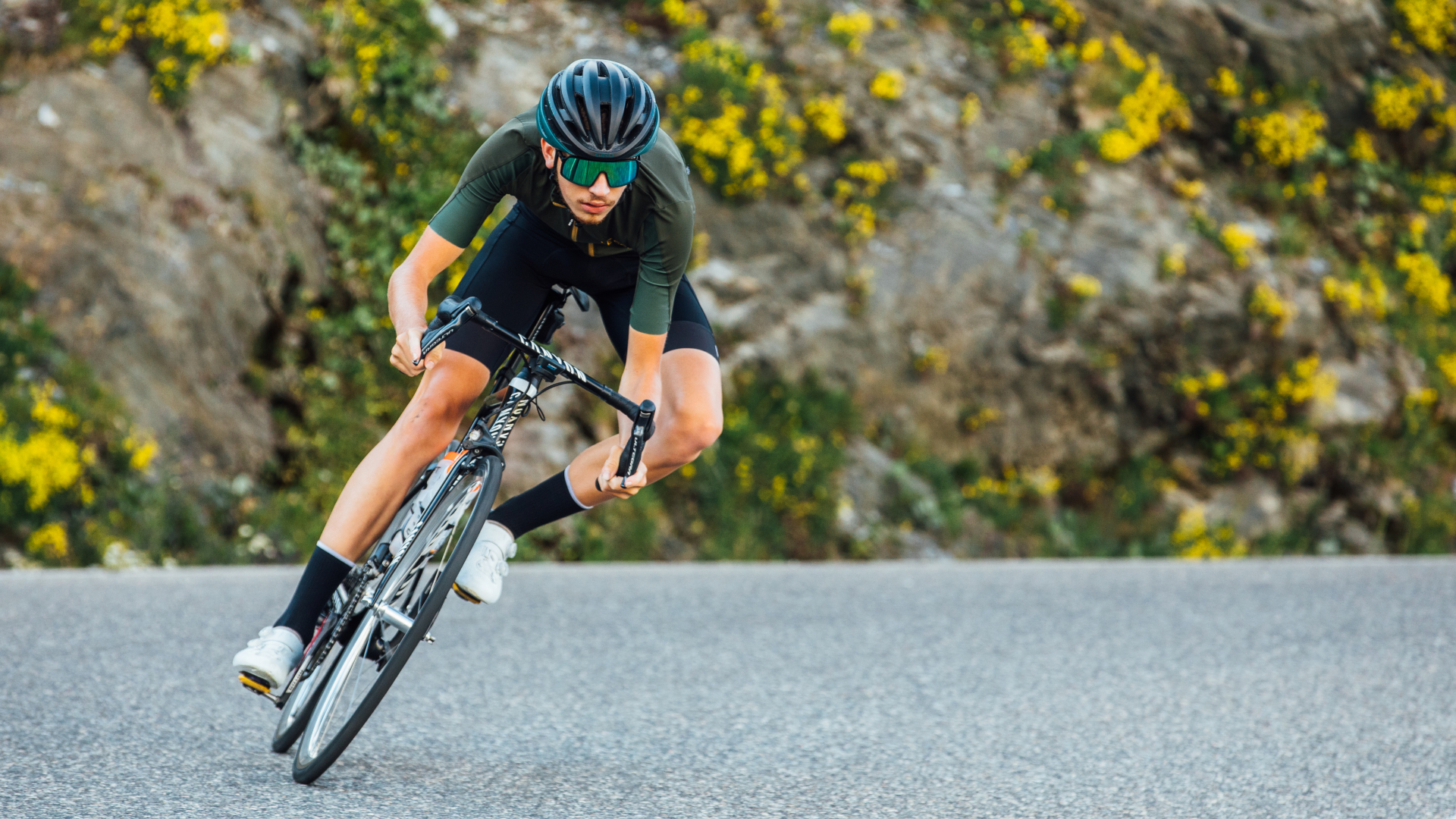
Given that your tyres are your only contact with the road, their importance can’t be overstated. Their impact on the overall ride quality of your bike is pronounced; a good set, with a tread pattern well-suited to your chosen terrain, will deliver additional comfort and confidence; a bad set will take both away just as fast. Equally, knowing that underneath you is a set of tyres that’s resistant to punctures is both comforting and confidence inspiring, too.
But does this mean they need to be expensive? Not necessarily. While the best summer tyres with a high price tag are often great at delivering a suppleness that cheaper rubber finds hard to match, this can sometimes translate to a tyre that wears quickly and cuts easily.
If you’re riding year round, you’ll want a tyre that can handle the miles and the varying conditions. This is where budget tyres come into their own. As an alternative to the very best winter tyres, these can be both an ideal match for your winter bike or your summer workhorse (depending on make and model), where a little extra rolling resistance is an acceptable trade off for a reduction in punctures and a tyre that lasts. They're also ideal for anyone on a budget or those making their first forays into road cycling.
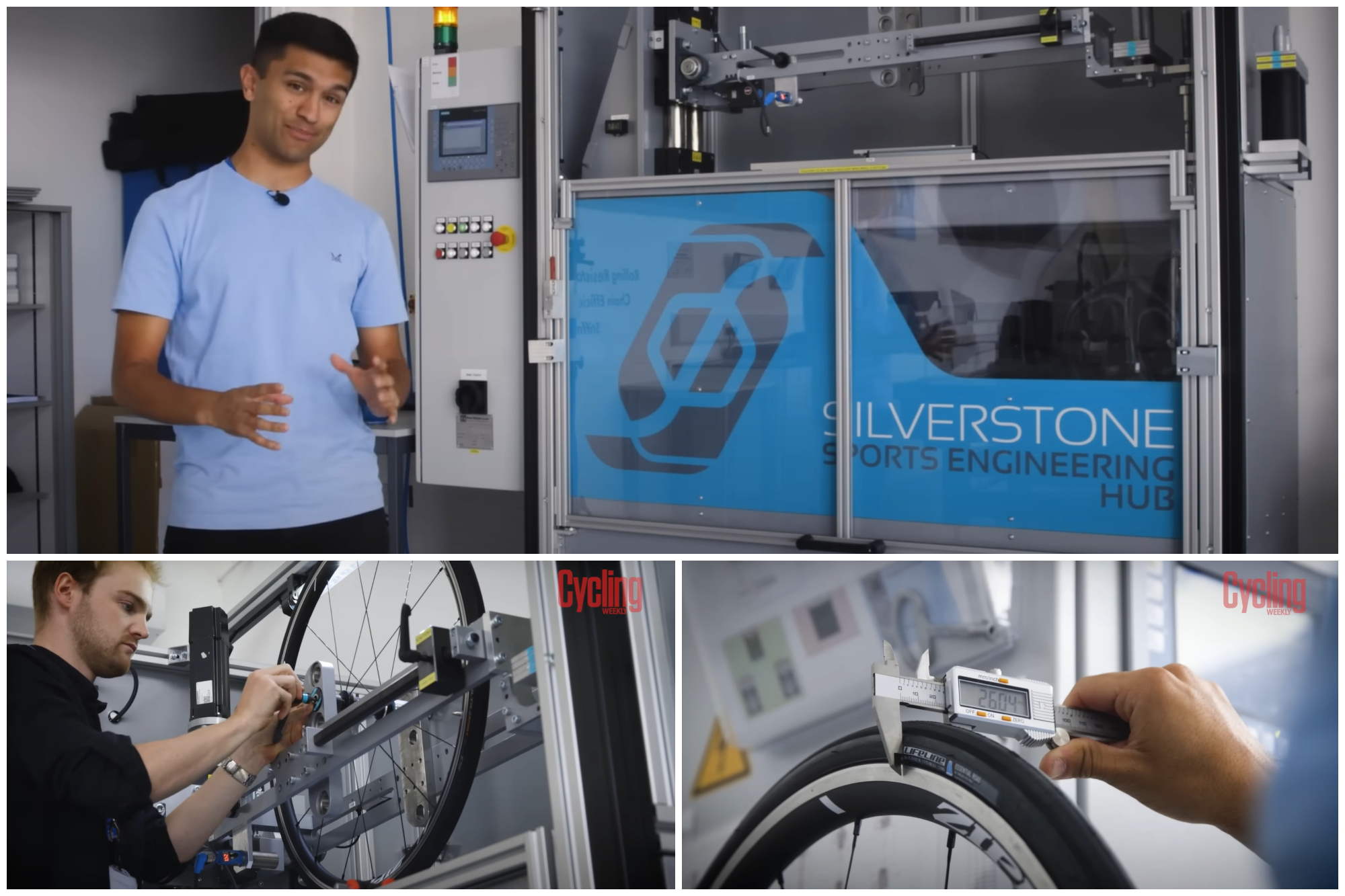
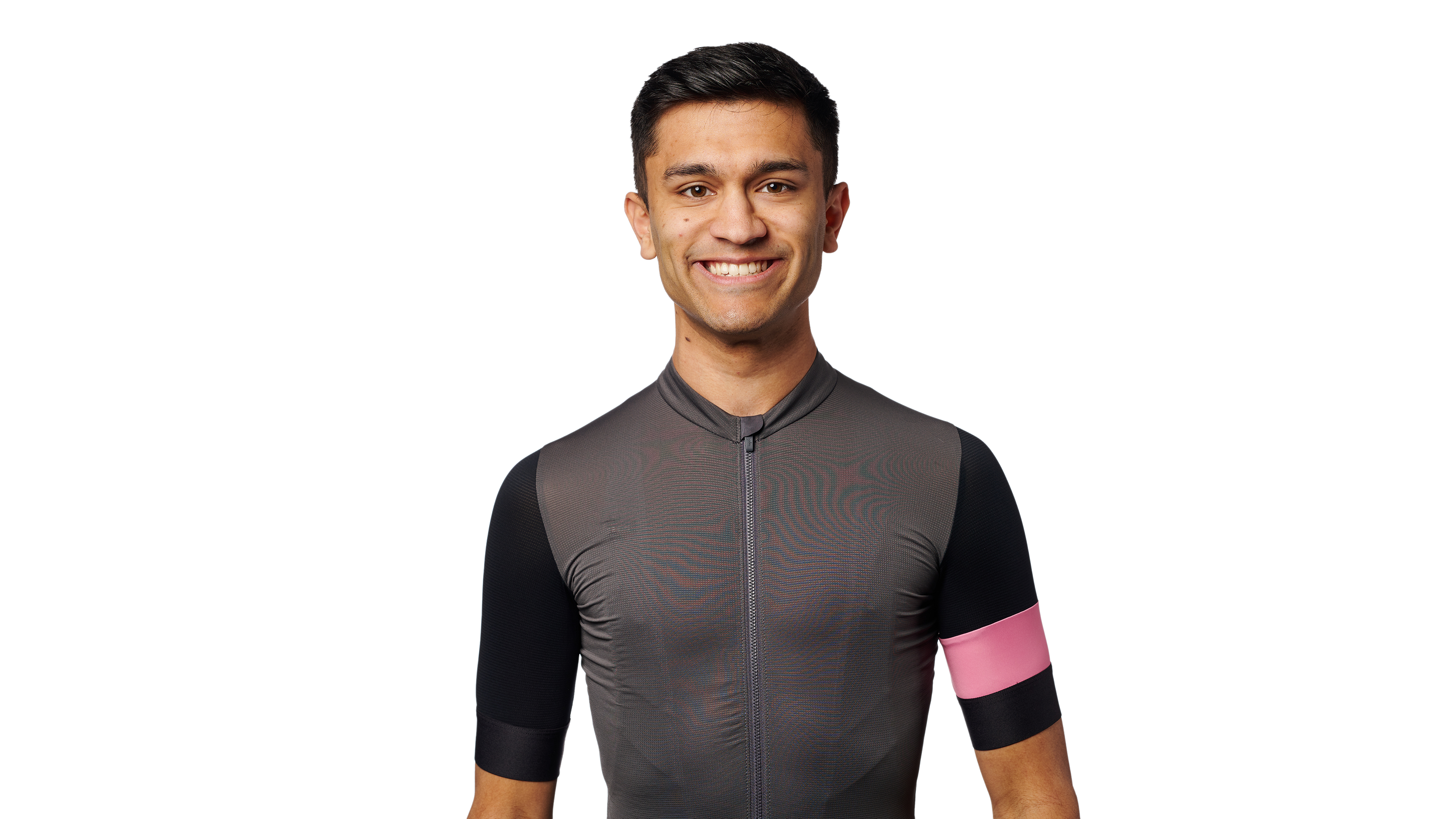
Sam has been Cycling Weekly's video manager since January 2022. You'll find him on our YouTube channel where he brings you the latest cycling tech news, rides and reviews all of the most important new launches and takes in some incredible cycling adventures too. Having spent over five years working in a couple of local bike shops, it's fair to say he enjoys getting hands on with all things tech.
We’ve chosen nine budget tyres and put them through their paces at the Silverstone Sports Engineering Hub. We’ll go into greater detail on what the test consisted of, but in brief, we inflated all of the 25mm tyres to 90psi - using a digital gauge for accuracy - and then set each of them up on the test rig.
Then, after an initial 10-minute warm up, each of the tyres were tested twice at two separate speeds: 24kph and 40kph, with the rolling resistance measured in watts. Alongside this and our other 'lab' tests, we also took the tyres out for some 'real-world' riding, to get a sense of their ride feel and grip.
But as we mentioned, there is more detail on all of this further down the page. For now, let's get stuck into the tyres and how they performed in each of their respective categories: summer, winter and all-round application.
Best budget road bike tyres for the summer
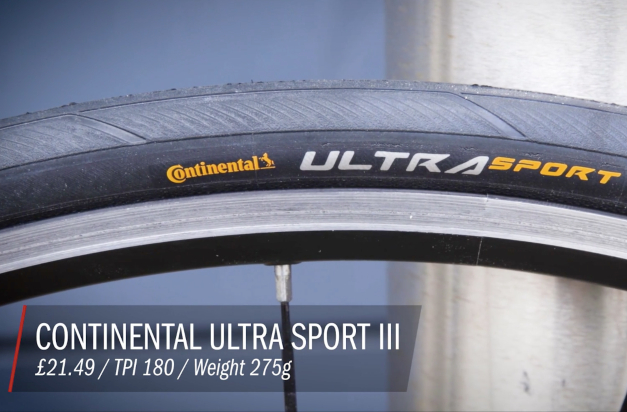
1. Continental Ultra Sport III Folding Road tyre
Our expert review:
Specifications
Reasons to buy
Reasons to avoid
The only tyre on test from arguably one of the most popular tyre manufacturers is Continental's Ultra Sport III. It’s the tyre with the highest Thread Per Inch (TPI) count on our list at 180.
The Ultrasport III doesn’t have a dedicated puncture protection layer built in, however it does mean that it rides very well compared to others on the list. Interestingly, the new Ultra Sport III is also now rated to be used on E-bikes up to 16mph.
We think this tyre is better suited to summer riding compared to others tested purely down to the lack of puncture protection. That said, we can report that wet weather performance on these tyres is rather good.
Perhaps unsurprisingly, given the high TPI count and general suppleness, it was the fastest rolling of the bunch, with a great ride feel and grip - which really is what you want from a summer tyre.
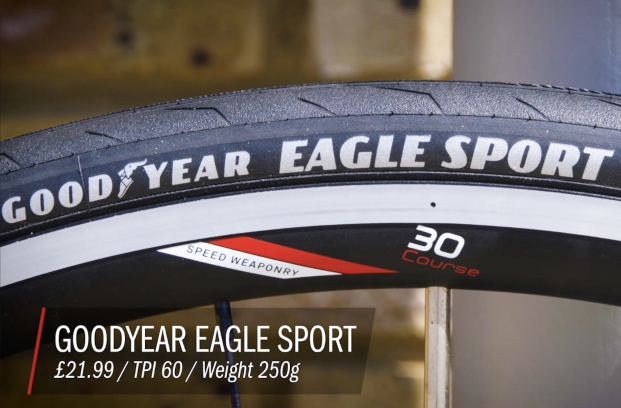
2. Goodyear Eagle Sport Road tyre
Our expert review:
Specifications
Reasons to buy
Reasons to avoid
There's lots to like about the Eagle Sport tyres. They performed well in both wet and dry and also sit fairly wide on the rim - we measured them at 26mm - which can aid comfort and traction.
The TPI count is fairly low, so they don't feel as supple as some of the tyres tested here with higher TPI counts. That said, they do offer plenty of puncture protection, which paired with the silica and special strengthening additives, makes for a pretty robust tyre.
If you're looking for improved ride quality then you may want to size up the the 28mm and run them at a lower pressure. That said, the compound feels better than you might expect and they did perform as the second fast tyre tested, with an impressively low rolling resistance for a tyre such as this. In short, a solid tyre that well-suited for all round riding.
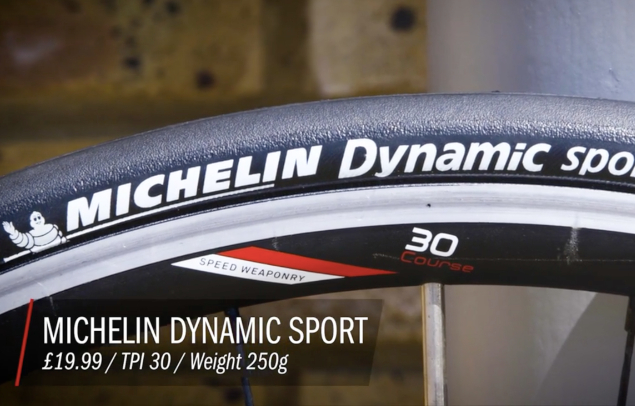
3. Michelin Dynamic Sport Road tyre
Our expert review:
Specifications
Reasons to buy
Reasons to avoid
With a low thread count of 30 TPI, the ride quality of the Dynamic Sport isn’t as good as some of the other tyres we had on test. It felt a little more wooden and was quite harsh over high frequency bumps. However, they aren’t very heavy, weighing just 250g per tyre.
The grip is fair, although we did have to drop the pressure a little to increase our confidence in them as they are entirely slick. They broke traction more often than some of the other tyres on test, which could well be down to their harder feeling compound. If we were to choose to ride these tyres we definitely run the widest we possibly could. Luckily, they are available in a 28c.
While the tread is fairly thick, there are no claims of any puncture protection so we'd suggest these are best reserved for summer use. While these didn’t perform badly in terms of rolling resistance, they do lack a little in overall ride feel, which is likely to be down to the low TPI count.
Best budget road bike tyres for the winter
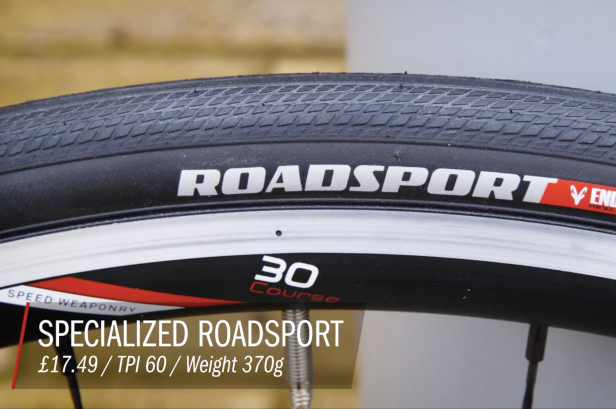
4. Specialized RoadSport
Our expert review:
Specifications
Reasons to buy
Reasons to avoid
Specialized's entry level RoadSport, which is often found on the US brand's cheaper stock road bikes, has gone through some updates as of late. They now feature built in bead to bead protection in the form of an Endurant casing. Specialized has also improved the quality of the compound, making it even grippier.
These tyres didn’t feel quite as nice when riding, compared to some of the other tyres we had on test , but they weren’t by any means the least supple either.
The level of rolling resistance was perhaps as expected; they were just over seven watts faster than the Lifeline Prime Armour tyres, but around four watts slower than the Vittorias.
With a fairly average ride feel and a dedicated puncture protection layer, they represent a good balance especially when considering the type of riding you're likely to undertake during those winter months. The RoadSports did measure up on the narrow side once on the rim. If your bike has the clearance, then opting for the wider 28c tyres would expand your contact patch and allow you to run them at a lower pressure for extra comfort and grip.
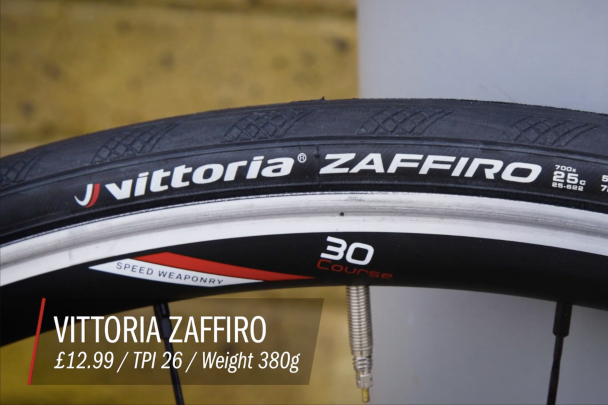
5. Vittoria Zaffiro Road tyre
Our expert review:
Specifications
Reasons to buy
Reasons to avoid
Given the Zaffiro is the entry point in Vittoria’s road range, the 'spec sheet' shouldn't be much of a surprise. The TPI count is just 26. This makes for a tyre that doesn’t ride all that well, but it does make up for that with durability and puncture protection.
While the Zaffiro doesn’t claim to have any special liners, what it does have is an incredibly thick casing which includes the sidewalls. Surprisingly, when it came to the test, the Zaffiro was over ten watts faster than the Lifeline Prime Armours, another tyre of test with a pretty robust and unforgiving casing.
While the ride quality is far from cushy, they're a robust, basic tyre that roll along a little better than might be expected.
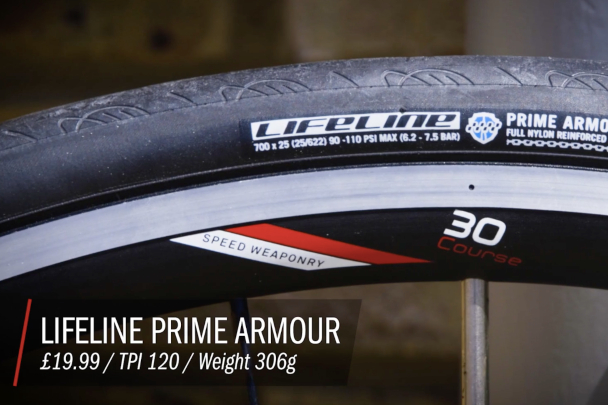
6. LifeLine Prime Armour Road Tyre
Our expert review:
Specifications
Reasons to buy
Reasons to avoid
The Prime Armour tyres deliver a pretty impressive list of specs, which more closely matches those of tyre that are twice the price. The thread count is an impressive 120tpi, they boast a kevlar puncture proof belt and also have a folding bead - and were one of the very cheapest on test.
Considering these tyres are designed for harsher conditions, they’re never going to feel like springy summer tyres, due in part to the layer of kevlar hidden in the tyre.
It's worth mentioning that the tyres are a little difficult to mount. However, after 100 miles or so, they do start to ease up. So if you do get caught out by a roadside puncture, they shouldn’t put up too much of a fight.
Our test numbers show the Prime Armours to be the slowest of all the tyres, which was perhaps a little surprising given the higher TPI count. However, they were tough to fit, with sidewalls that are incredibly thick and a pretty wooden ride feel, all indicators of potentially high rolling resistance.
But if you’re commuting or riding in the city and getting a puncture is the last thing you want then these tyres will serve that purpose. They also measured as one of the widest tyres so your contact patch with the ground will be larger than most aiding in grip. In short, they feel incredibly robust but this is at the expense of ride feel and speed.
Best budget road bike tyres for all round conditions
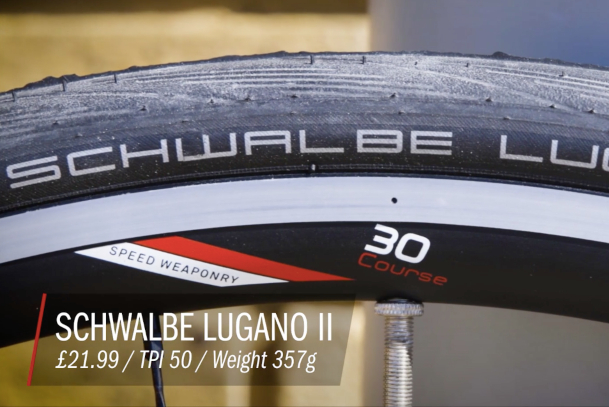
7. Schwalbe Lugano II K-Guard Folding Tyre
Our expert review:
Specifications
Reasons to buy
Reasons to avoid
Schwalbe has prioritised grip and durability on its Lugano II tyre, which is why it's classed as a training/city/commuting tyre. These have been our video manager Sam Gupta’s go to choice for winter riding for a very long time. Whilst he admits they don’t provide the best ride feel, he’s never had a puncture.
They feature Schwalbe's K-Guard lining, which is a layer of rubber reinforced with kevlar fibres. They come in at a 3/7 on Schwalbe’s own protection rating so while Sam may not have caught a puncture over many hundreds of winter miles, this may be down to luck rather than top tier tyre technology. That being said, they are grippy and are highly durable.
In our test they were eight watts faster than both the 'all round' Lifeline tyres. Combine this decent level of rolling resistance, with superb levels of grip and puncture protection over the middle of the tread and you have a tyre that's likely to serve you well across a range of seasons and conditions.
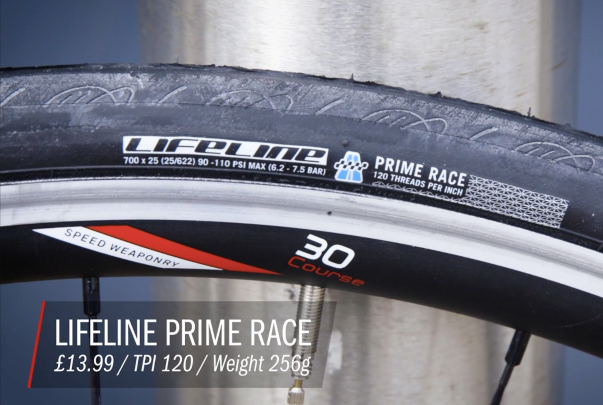
8. LifeLine Prime Race Road Tyre
Our expert review:
Specifications
Reasons to buy
Reasons to avoid
The Prime Race tyres were something of a surprise. They have a respectable 120TPI casing, kevlar belt for puncture protection and and soft compound, allowing you to really lean on them in the corners. They rode incredibly well and not just for a cheap tyre. They're also pretty light at just 250 grams (actual) per tyre.
We'd suggest opting for the 28mm model and dropping the pressure, if you have the clearance in your frame and have an internal width in your rims of around 20mm. You’ll enjoy even more grip and can push on them even further.
Our tests show that the Prime Race is marginally slower than Lifeline's Essential tyre but with its more impressive spec sheet, they do feel much nicer to ride and only cost only slightly more.
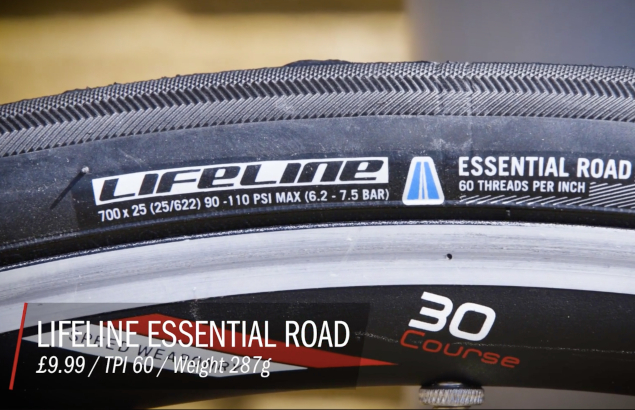
9. LifeLine Essential Road Tyre
Our expert review:
Specifications
Reasons to buy
Reasons to avoid
These are the cheapest tyres on the list, but is the price too good to be true?
The list of specs suggests plenty of value for money; they have a folding bead, 60TPI and has a claimed weight of 280g. The surface of the tyre has a light amount of tread to aid with traction and during our rides they tyre never broke grip. The 60TPI doesn’t provide the greatest ride feel but can you really expect too much from a tyre that costs the same as a coffee and a couple of muffins?
What the Essential tyre does have though is a high density nylon layer which sits under the surface of the rubber to aid in puncture protection. To improve the feel of these tyres we'd suggest sizing up; choose the 28mm model and drop the pressure even further.
How we test
As well as riding all the tyres for many miles, as we do when testing any road or gravel tyre, we took our nine budget tyres along to Silverstone for the day.
Based at its Sports Engineering Hub we used the Cycling Test Lab's Rolling Resistance Rig to help us assess which of the nine tyres were fastest. To ensure a level playing field, we mounted all the 25mm tyres to the same rim and inflated to 90psi, using a digital gauge for accuracy. We then measured the actual width of each tyre before setting them up on the rig.
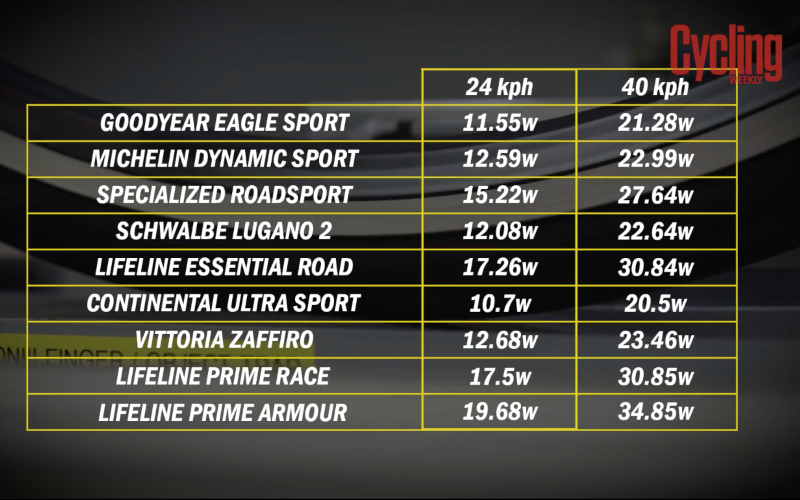
We used a 40kg load per wheel, which then equates to an 80kg rider. Each tyre underwent a warm up - 10 minutes and 40kph - before being tested twice at two speeds, 24kph and 40kph. The rolling resistance was measured in watts.
As you can see from the results below, there are significant differences between the tyres. It's worth mentioning here that while a lower rolling resistance is important if you're looking for a tyre to help you go faster, other attributes such as ride quality, puncture protection and durability may be as , or more important, depending on your requirements.

What to look for in a road tyre?
Sadly, there is no such thing as the 'ultimate' bike tyre: choosing a model is always an exercise in balancing trade offs - spending more simply reduces quite how large those trade offs are.
Robust puncture protection, high levels of grip, and a long wear life generally come at the expense of weight, rolling resistance and suppleness.
The very best summer road tyres are typically geared towards those latter qualities, although grip is still a very important element - and a tyre that continually punctures will ultimately be slower than one with slightly higher rolling resistance and a more robust casing.
Equally, winter and training tyres are designed to be more resistant to punctures and to be longer lasting. The trade off is that these tend to be heavier, slower and less comfortable than summer rubber. With that said, the very best winter tyres are the ones which manage to combine those more rugged qualities with a fair turn of speed - fast is fun and all that.
So, those are the qualities to look for in a tyre, just don't expect to see the pinnacle of all of them in one single model!
How long should road bike tyres last?
Specialist touring tyres, such as Schwalbe's Marathon Plus model, can last for over 10,000km - although these more expensive than the models we put through their paces in our cheap road bike tyres grouptest.
Most road tyres will last between 2,000km and 5,000km, but the good news is that cheaper tyres tend to use harder wearing rubber than speedy summer tyres - so not only do they cost less, they'll likely last you longer too!
The latest race content, interviews, features, reviews and expert buying guides, direct to your inbox!
Luke Friend has worked as a writer, editor and copywriter for over twenty five years. Across books, magazines and websites, he's covered a broad range of topics for a range of clients including Major League Baseball, Golf Digest, the National Trust and the NHS. He has an MA in Professional Writing from Falmouth University and is a qualified bicycle mechanic. He has been a cycling enthusiast from an early age, partly due to watching the Tour de France on TV. He's a keen follower of bike racing to this day as well as a regular road and gravel rider.